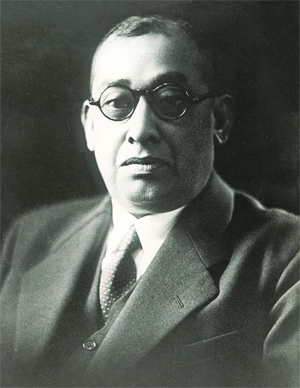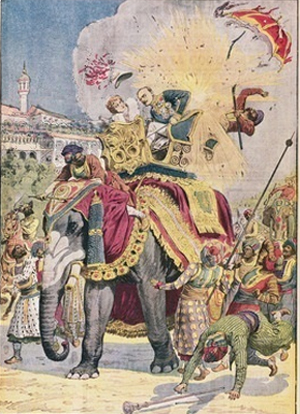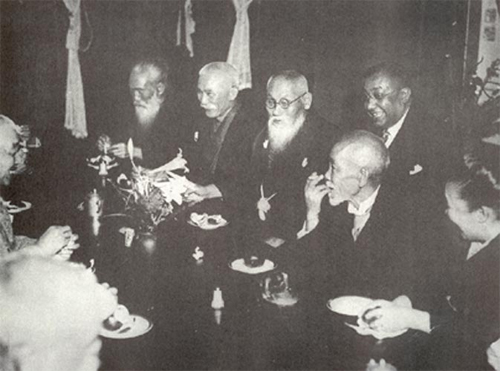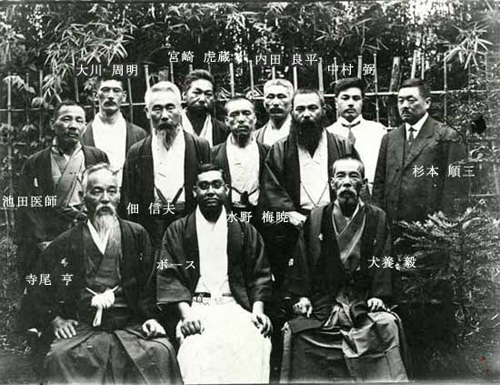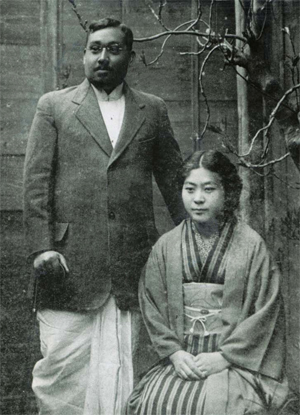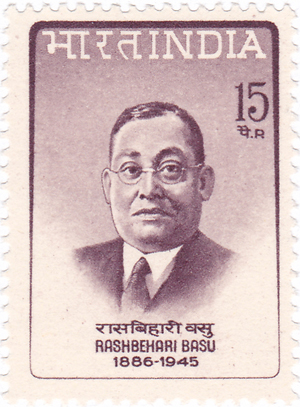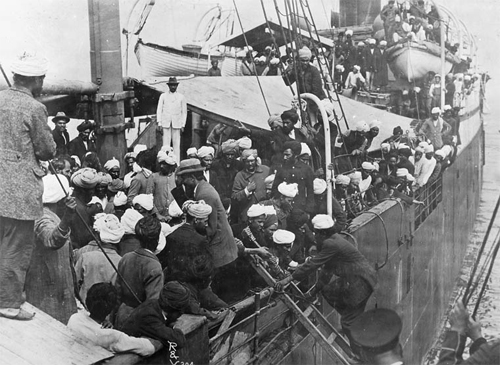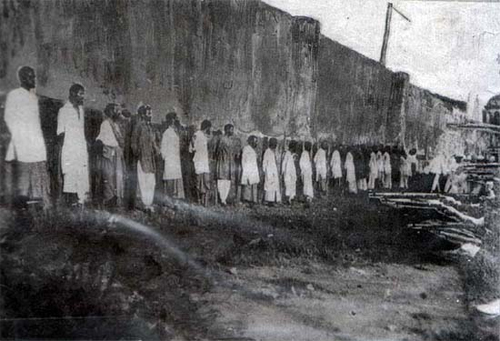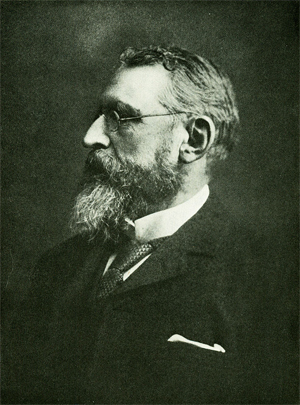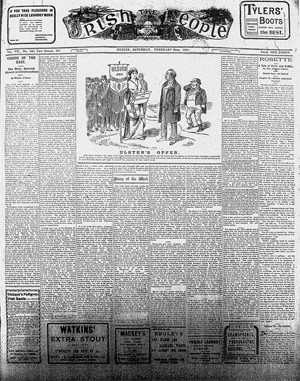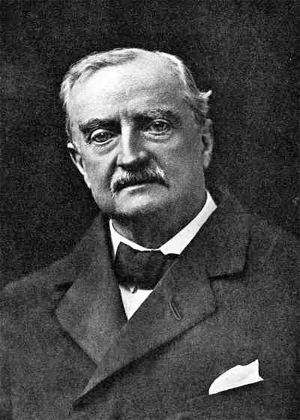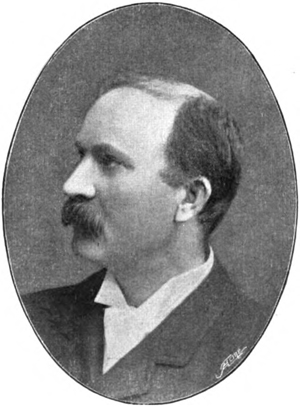Part 2 of 2
The Reasons for the Society’s FailureTable 1. Actions Undertaken by the Maniktala Secret Society
Year / Month / Place / Target / Type / Result
1906 / ? / East Bengal / Fuller / Assassination / Aborted
1906 / ? August / Rangpur / a widow / Dacoity / Aborted
1907 / ? August / Bankura / a mahani / Dacoity / Aborted
1907 / October / Darjeeling / Fraser / Assassination / Aborted
1907 / November / Mankundu / Fraser / Derailment / Failure
1907 / November / Mankundu / Fraser / Derailment / Aborted
1907 / December / Narayangarh / Fraser / Derailment / Failure
1908 / January / Calcutta / Kingsford / Assassination / Failure
1908 / April / Chandernagore / Tardivel / Assassination / Failure
1908 / April / Muzaffarpur / Kingsford / Assassination / Wrong persons killed
Sources: GOB pol. conf. 26fiI1908; ABT, p. 16; Nixon Report, Table A; GOI HP-A September 1910, nos. 33-40, pp. 18-21, 42, GOI HP-D, August 1911, no. 9, p. 13.
The Maniktala secret society was more ineffective than most such groups, failing in all ten actions it undertook. (Table 1) The first six attempts may be considered training exercises. In the four that followed those involved did not fail for want of pluck, but because of carelessness and lack of discipline. In contrast the centrally organised Dacca Anushilan, which began later than the Maniktala society, got positive results from the first, seriously wounding their initial assassination-target (a British Collector) and then carrying out a series of successful dacoities and collaborator-assassinations.101 On the other hand Jatin Mukherjee, who like Barin preferred non-centralised organisation, achieved many of his revolutionary dims and generally managed to keep himself out of jail. The failures of the Maniktala group must be attributed primarily to slackness on the part of its senior members. The breaches of security that led to its penetration and capture were the responsibility of two long-time members, Satyen Bose and Abinash Bhattacharya.102 Barin Ghose, whose rashness has been attested to by his brother Aurobindo and Hem Chandra Das, did not properly dispose of the society’s arms and explosives even after he learned that a search was imminent. Many members including the usually circumspect Aurobindo were exceedingly incautious with regard to documents that when produced in court often resulted in conviction.
Some writers have maintained that the failure of the Maniktala group, and the early Bengali revolutionary movement in general, should be attributed to its lack of a proper ideological foundation. Beginning with society member Hem Chandra Das, a class of writers have suggested that the infusion of religion crippled the movement almost from the beginning.103 Others, basing themselves on the Marxist conception of terrorism, have argued that the lack of mass contact or ’peasant base’ was the undoing of Indian revolutionaries before the 1920s.104 It certainly is true, as I have noted above, that early Bengali terrorists lost a potential source of strength by shutting out the Muslims. But religious beliefs do not necessarily weaken a movement of violent resistance. Many religious terrorist groups have been quite effective. The conflict between the ’religious’ and ’non-religious’ members of the Maniktala group no doubt was a drain on their energies; but all members shared a common dedication to the goal of independence and this should have been enough to permit them to engage in effective action. They were urban terrorists, not rural guerrillas needing peasant support to set up ’liberated areas’.105 They could have succeeded in their immediate aims if they had applied themselves to the job. They failed not because of mistaken ideology but because they lacked circumspection, discipline, and experience.
Failure is the lot of most terrorists. According to one expert there is no known case of modern terrorists seizing political power; at best they have influenced the course of revolutionary movements by applying pressure on the rulers and by providing publicity to the cause. 106 The Maniktala society definitely succeeded in making public the demands of the most extreme school of nationalist politics. They also appear to have helped force the government to take remedial steps faster than it would otherwise have done. In December 1908 Lord Minto commented in a letter to Secretary of State for India John Morley ’that up to the murders at Muzaffarpore we thought we were dealing merely with sedition as represented by treasonable speeches and writings, but that the Manicktola Garden discoveries shed an entirely new light on the dangers we had to face.’ Minto was hardly one to admit to being swayed by a show of force; but he did acknowledge in the same letter: ’The conspiracy is far better organized than I had ever imagined and though the idea of any attempt at revolution seems fantastical, there might if we had not made the discoveries we have, have been something in the nature of simultaneous assassinations of Europeans followed by tremendous punishment by us. The dangers, which I hope we have avoided, are terrible to think of.’107 Minto did not and perhaps could not imagine that the dangers represented by a race he considered ’hysterical’, ’impressionable’ and ’devoid of manly qualities’ might prove a challenge to the Empire. Such complacency would not be possible for his successors, for example Lord Irwin, who had to negotiate with Gandhi in the wake of the Chittagong Armoury Raid and the execution of Bhagat Singh. Morley, a more perceptive statesman than Minto, was aware even in 1908 that the terrorists could not be answered by police repression alone. Three weeks after the Muzaffarpur attempt he wrote to Minto from London: ’The Bomb (here at least) has made old John Bull waken up and rub his eyes; he won’t be satisfied with mere Police Vigour (though we may throw him judicious morsels of this sort); he will want rational endeavors to set right Whatever may be amiss.'108 A year later it was ’common talk in Calcutta that the Council reforms [’Morley-Minto Reforms’] and the appointment of the Hon’ble Mr Sinha [to the Viceroy’s council] were the direct resuits of the [Alipore] conspiracy. It is said that the Congress begged for 20 years and got nothing, but one year of bombs has brought all this reform.’109 This of course was an exaggeration: work on the reforms had begun two years before the first bomb was thrown. But it seems likely that the terrorist threat was one of the factors that made Morley lash out at Minto after reading a tardy and timid draft reform proposal of July 1908: ’India can’t wait.’ ’It [the draft scheme] will have to be extended immensely.110 The proposal was in fact much extended before its tabling a half year later, and an Indian member of council, previously unthinkable to Minto, was appointed. No bureaucrat will freely admit in an official document that his decisions have been influenced by actions outside the legitimate political ~tocess. But such actions certainly have an influence on government policy. Was Barin Ghose far off the mark when he remarked to Charles Tegart in 1913: ’Can any official assure me that bombs had nothing to do with the undoing of the partition of Bengal’?111
ConclusionThe Maniktala secret society set the pattern for Bengali terrorist organisations before the 1920s. The group was loosely structured and dependent on leaders whose incompetence led it to ruin before its aims could be achieved. In some respects, for example, organisational patterns and the use of high explosives, the society followed the example of European, particularly Russian terrorist societies. In other respects -- composition, methods of collection of funds and arms, types of operation -- it was typical of terrorist groups everywhere. All its actions were failures, but it influenced the course of the freedom movement by introducing to it a new and dangerous element.
_______________
Notes:1. The term ’Jugantar Group’ was first used in 1907 to designate those who continued to work for the newspaper Jugantar after the split between Barindrakumar Ghose and Nikhileshwar Roy Maulik (J. Mukhopadhyay, Biplabi Jibaner Smriti, Calcutta, 1983, p. 38). The police seem to have thought the term applied to Barin’s faction, for in a Government of Bengal file dated I May 1908, the Chief Secretary applied the terms ’Jugantar Party’ and ’Jugantar boys’ to those arrested in Manicktolla and Calcutta the next day (Government of Bengal, political confidential file 266/1908, file marked ’Spare Copies etc.’ Government of Bengal political confidential files are kept in the West Bengal State Archives (WBSA). Hereafter they will be referred to as GOB pol. conf.) In 1909 and 1910 the Bengal Government used the term ’Jugantar Gang’ to refer to the group that had published Jugantar in 1907 and 1908 and later continued its operations in secret (Note on the ’Jugantar’ Gang Subsequent to the Search of the Manicktola Garden (WBSA); Government of India Home Political A, March 1910, nos. 33-40, p. 46. Government of India Home Political files, kept in the National Archives of India, will be referred to hereafter as GOI HP-series A, B or D.) During the Howrah Gang Case (1910) the Bengal Government named one of twelve groups of persons accused in the case the ’Yugantar Gang’ or ’Group’ (Report of Committee Appointed to Investigate Revolutionary Conspiracies in India (hereafter Rowlatt Report), Annexure (1), 6.) It is not true as suggested by G. Haldar and others that the term Jugantar Party was invented by the Government at the time of the Howrah Case and later on adopted by the revolutionaries. G. Haldar, ’Revolutionary Terrorism’, in Studies in the Bengal Renaissance, Calcutta, 1977, p. 243; S. Sarkar, The Swadeshi Movement in Bengal 1903-1908, Calcutta, 1973, pp. 465-66.
2. An Account of the Revolutionary Organisations in Bengal Other than the Dacca Anushilan Samiti, 1917 (hereafter Nixon Report) (WBSA), pp. 1-7; Memorandum on the History of Terrorism in Bengal 1905-1933 (hereafter Terrorism 1905-33) (WBSA), p. 3; B. Ghose, Wounded Humanity, Calcutta, n.d. (1936), p. 52.
3. The Chapekar brothers’ ’club’ (1895-97) was not in my opinion a terrorist organisation. since its only active members (after a brief experiment with street waifs) were from a single family. Nor did it have a clear political aim. See Damodar Chapekar’s ’Autobiography’ in Source Materials for a History of the Freedom Movement in India, vol. 2, Bombay, 1958, pp. 955-1015. Taking this and other documents into consideration, the writers of the Rowlatt Report concluded, correctly, I think, that the brothers were first and foremost ’ultraorthodox’ and had ’no definite political aims’ (Rowlatt Report, para 20).
4. Jugantar, 8 April 1906. Text reproduced in Haridas Mukherjee and Uma Mukherjee, eds., Bharater Swadhinata Andolane ’Jugantar’ Patrika Dan, Calcutta, 1972, p. 56; article ascribed to Aurobindo Ghose by Bhupendranath Dutt (a sub-editor of J)ugantar in ’Aurobindo Smarane’ (Nirnay, Paush-Magh 1357 Bengali era, p. 55).
5. Jugantar articles reprinted in Mukherjee and Mukherjee, eds., ’Jugantar’ Patrika, pp. 62, 78, 131, 72-73, 190, etc. The word swadhinata, not the vague and more ambiguous swaraj, was almost invariably used for ’independence’.
6. Bande Mataram, 11 April 1907.
7. Bande Mataram, quoted in Times (London) 10 September 1906 under date 8 September. The issue of Bande Mataram in which Pal’s editorial appeared has been lost.
8. Sri Aurobindo [Ghose], On Himself, Pondicherry, 1972, p. 29; Bande Mataram, 12 April 1907.
9. See the memoirs of participants passim, for example, B. Ghose, Agniyug, Calcutta, n.d.; U. Bannerjee, Nirbasiter Atmakatha, Calcutta, 1976; H. Kanungo [Das], Banglay Biplab Pracheshta, Calcutta, 1928; N. Gupta, Smritir Pata, Calcutta, 1381 Bengali era.
10. Kanungo [Das], chapter 12.
11. For ’Libertad’ see Archives Nationales, Paris, F/7/12723, and Jean Maitron et al., Dictionnaire Biographique du Mouvement Ouvrier Français, vol. 13, Paris, 1975, pp. 283-84. One of the men Hem studied with was the Russian Nicolas Safranski; see Archives Nationales F///12894, no. 1; Cf. James Campbell Ker, Political Trouble in India 1907-1917, Calcutta, 1973, pp. 130-31. This edition (hereafter Ket) was a reprint of the Calcutta edition of 1917.
12. Kanungo [Das], chapter 5; M.N. Roy, Selected Works of M.N. Roy, vol. 1, Delhi, 1987, pp. 332 ff., cf. vol. 2, 1988, 165-68. Sarkar, Swadeshi Movement, pp. 484-88.
13. For a journalistic expression of this opinion see Indranil Banerjie, ’Roots of Revivalism’, Sunday, 25-31 October 1987, p. 27. Among historians, Amales Tripathi asserts that ’the inevitable recoil from [Aurobindo’s] unnatural blend of religion and politics had one tragic side-effect viz. strengthening of communalisin’ (’Aurobindo—A Study in Messianic Nationalism’, The Calcutta Historical Journal 4 (July-December 1979), p. 75. Bipan Chandra states that Aurobindo and others ’encouraged religiosity and thus indirectly a sense of communal identity among Hindus’ (Communalism in Modern India, Delhi, 1987, p. 175). Gopal Krishna states more prudently that Aurobindo, Tilak and others imparted ’a profoundly religious charactei’ to the national movement, but absolves them from promoting ’an exclusive Hindu nationalism’ (IESHR, 8, 4, 1971, pp. 378-79).
14. Romila Thapar, The Past and Prejudice, New Delhi, 1975, p. 13; Chandra, Communalism, p. 142; Banerjie, ’Roots’, p. 27. Note that all three writers equate Aurobindo’s ’religion’ with Hinduism and that Thapar and Banerjie print ’Nationalism’ (upper case in the text) as ’nationalism’.
15. Sri Aurobindo papers (Sri Aurobindo Ashram Archives), Notebook G10.
16. I.e., Thapar, ibid. and Chandra, ibid.
17. These are official translations. So far as I know the Bengali texts of the two pamphlets have not survived. English translation of Sonar Bangla reprinted in Empress (Calcutta) September 1906, reproduced in Shankari Prasad Basu, Nivedita Lokamata, vol. 3, Calcutta, 1395 Bengali era, pp. 114-16; text of Raja Ke? reproduced as Exhibit 1226 in Alipore Bomb Trial, Alipore Bomb Trial Papers, Victoria Memorial (Calcutta) Collection (hereafter VM ABT records), III.6.1226.
18. Jugantar articles reproduced in Mukherjee and Mukherjee, eds., ’Jugantar’ Patrika, 131, 53.
19. I have discussed the terrorists’ aims and the ’religious’ and ’revolutionary’ influences on their thinking at greater length in a paper to be published by The Historian (Tempe, Arizona).
20. The best treatment of the subject is in Sarkar, Swadeshi Movement, pp. 405-64.
21. There was, said one contemporary political and labour leader, ’a belief [among Hindus] that the East Bengal Government was responsible for the aggressiveness of the Mahomedans; for instance for the desecration of the temples at Jamalpur’ (Deposition of A.C. Bannerjee in Alipore Bomb Trial, VM ABT records IV.5.423).
22. ’Rules of Membership of the Anushilan Samiti’, cited in P.K. Ghose, ’Ideology of a Revolutionary Secret Society’. India Past and Present 1 (1984); 96.
23. Aurobindo, On Himself, p. 23.
24. A. Bhattacharya, ’Baiplabik Samitir Prarambh Kaler Itihas’, in B. Datta, Dwitiya Swadhinatar Sangram, Calcutta, 1949, pp. 190-200; A. Bhattacharya, ’Aurobindo’, Galpa Bharati 6 (Paush 1357 Bengali era): 829-34; B. Ghose, Agniyug, p. 47.
25. GOI HP-A May 1908, nos. 112-50, pp. 13, 25; B. Ghose, Agniyug, pp. 69, 77.
26. ’Statement of Accused Person’, in Bijoy Krishna Bose, ed., The Alipore Bomb Trial, Calcutta, 1922, p. 22. This book, hereafter referred to as ABT, contains transcripts of documents and summaries of testimonial evidence. It is more convenient to cite this book than the often unnumbered transcripts of the court proceedings kept in the Alipore Judges Court and in the Alipore collection of the Victoria Memorial, Calcutta.
27. Ker, p. 62.
28. GOI HP-D July 1907, no. 66: 1; V. Chirol, Indian Unrest, London, 1910, pp. 22, 95; Letter Minto to Morley 27 May 1908, q. Mary Minto, India: Minto and Morley: 1905-1910, London, 1934, p. 234.
29. ABT, pp. 29, 39, 41, 35, 32, 36.
30. GOB History Sheet 679 (Appendix A), p. i (WBSA).
31. Terrorism 1905-33, p. 2.
32. Ker, Political Trouble, pp. 51-52.
33. Bartaman Rana Niti was written by Barin Ghose using notes from Major Bloch’s Modern Warfare which was published serially in The Review of Reviews. GOB pol. conf. 279/1910; Bengalee 4 April 1909; N. Gupta, p. 33.
34. Ker, Political Trouble, p. 50.
35. For example, ’General Principles of [the] Secret Society’, India Office Records (IOR) MSS Eur D 709, ’Nangla Dacoity Case Exhibits’, Ex 3g (hereafter ’General Principles’). This document is generally known through the summary published in para 90 of the Rowlatt Report.
36. GOI HP-A September 1910, nos. 33-40, p. 40.
37. Walter Laqueur, The Age of Terrorism, Boston, 1987, p. 93.
38. A. Guha, Aurobindo and Jugantar, Calcutta, n.d., pp. 32-34; P. Ghose, ’Organizational Structure of a Revolutionary Secret Society: Anushilan Samity, 1901-1918’. Bengal Past and Present XCVII, part II.(1978): 144.
39. N. Gupta, pp. 32-33; U. Banerjee, p. 11.
40. This actual twofold division corresponds also to the theoretical division in the ’General Principles’ manuscript (p. 20) into ’general’ and ’special’ branches, the former being concerned with organisation, propaganda and agitation, the latter having seven sections, one of which is the ’terroristic department’.
41. GOB pol. conf. 194/1909 (9).
42. Laquour, pp. 93-96.
43. Nolini Gupta wrote that he spoke once to Aurobindo Ghose about the hierarchical structure described in a book he had read, almost certainly Thomas Frost’s The Secret Societies of the European Revolution 1776-1876, 2 vols. London, 1876; N. Gupta, pp. 33-34. See also the Rowlatt Report, para 14, where it is noted that Ganesh Savarkar possessed a ’much scored’ copy of Frost. The authors suggest that the structure of the Abhinav Bharat Society was modelled on certain Russian groups spoken of in the book.
44. Laqueur, pp. 93-96. For factionalism in the Dacca Anushilan see P. Das, Amar Jiban Kahini, Calcutta, 1987, pp. 81, 84 and P.K. Ghose, ’Organizational Structure’, p. 143. Ghose notes that Pulin Das made operations of one group at the expense of others part of the samiti’s general strategy.
45. The story of these schisms is told in overabundant detail in B. Ghose, Agniyug; N. Banerjee, Nirbasiter A;tmakatha H. Kanungo, Banglay Biplab P;racheshta etc.
46. B. Ghose, Wounded Humanity, p. 5 1; B. Ghose, ’Sri Aurobindo As I Understand Him’ (unpublished manuscript, Sri Aurobindo Ashram Archives), p. 37.
47. Interview with A.B. Purani in A.B. Purani, Evening Talks with Sri Aurobindo, Pondicherry, 1982, p. 17.
48. U. Bannerjee, p. 87; cf. N. Gupta, p. 35.
49. C.P. Beachcroft, judgment in Alipore Bomb Case.
50. Kanungo [Das], chapter 14.
51. C.C. Dutt, Purano Katha-Upasanhar, Calcutta, 1359 Bengali era, p. 18.
52. Kanungo [Das], pp. 10-13, 30-32.
53. M.N. Roy, q. L. Gordon, ’Portrait of a Bengal Revolutionary’. Journal of Asian Studies 28 (1968); 206. Bakunin’s ’World Revolutionary Union’ was fictitious, as was Nechaev’s Narodnaya Rasprava, for whose non-existent members the famous Revolutionary Catechism was written. The ’European Revolutionary Committee’ of Ishutin was another ’international organization’ with no membership. Laqueur, pp. 31-32.
54. B. Ghose, letter of 1955 in National Archives of India, History of the Freedom Movement file IV & V 41/2.
55. Morley papers (IOR MSS Eur 573), letters Morley to Minto 7 May 1908 and Minto to Morley 8 July 1908.
56. Alipore Bomb Trial proceedings reported in Englishman, 15 September 1909; GOI HDA May 1908, nos. 112-50, p. 6.
57. GOI HP-A September 1910, nos. 33-40, p. 40.
58. GOI HP-D August 1911, no. 9, pp. 13-14.
59. Ker, p. 387.
60. Ibid., p. 364.
61. Kanungo [Das], chapter 13.
62. Bunde Mataram weekly edition, 16 August 1908, p. 13.
63. Ker, pp. 139, 329-30, 402; see also B. Majumdar, Militant Nationalism in India, Calcutta, 1966, pp. 104-5.
64. B. Ghose, ’Sri Aurobindo as I Understand Him’, p. 37.
65. N. Gupta, pp. 36-37. Cf., for rites of passage, Laqueur, p. 25.
66. GOI HP-A May 1908, nos. 112-50, p. 36.
67. Note on the Chandernagore Gang (WBSA), p. 4.
68. GOI HP-A December 1909, nos. 15-16, p. 10.
69. Note on the Growth of the Revolutionary Movement in Bengal (hereafter Daly note) (WBSA), p. 8.
70. GOI HP-A May 1908, nos. 112-50: 11, 19-20.
71. Laqueur, p. 143; D. Rapoport, ’Fear and Trembling: Terrorism in Three Religious Traditions’. Am. Pol. Sci. Rev. 78 (1984): 660, 666. See Caroline Cahm, Kropotkin and the Rise of Revolutionary Anarchism, Cambridge, 1989, pp. 76ff, for a discussion of ’propaganda by deed’ in nineteenth-century Europe.
72. Laqueur, p. 105.
73. Kanungo [Das], chapter 9.
74. GOI HP-D August 1911, no. 9: 13; Daly note p. 14.
75. GOI HP-A May 1908, nos. 112-50, p. 19; Minto papers (National Library of Scotland), Telegram Minto to Morley, 16 May 1908.
76. See note 11 above.
77. HD-A May 1908, nos, 112-50, pp. 6, 16, 19; ABT, pp. 82, 84, 85.
78. Laqueur, p. 105n.
79. GOI HP-B March 1909, nos. 181-82, pp. 1-5.
80. GOI HP-A May 1908, nos. 112-50, p. 15.
81. Quoted in Laqueur, pp. 57-58.
82. ’General Principles’, p. 2.
83. GOB History Sheet 709, p. 4.
84. Daly note, p. 7; Narendra Nath Goswami confession reported in Bande Mataram weekly 28 June 1908; A. Bhattacharya, ’Aurobindo’, pp. 195, 196.
85. A. Bhattacharya, ’Aurobindo’ p. 191; Daly note, p. 7.
86. In Wounded Humanity (pp. 46-47) Barin wrote that ’political leaders’ made assassination ’a condition for providing necessary funds ... [saying] we must kill such and such officials and judges.’ In his Bengali memoirs he specified that one unnamed leader gave him a thousand rupees to kill Bampfylde Fuller (B. Ghose, Atmakahini, Calcutta, 1379 Bengali era, p. 58). Hem Chandra Kanungo [Das] made an almost identical assertion, mentioning the same official and the same amount, in his Bengali memoirs (Kanungo [Das], p. 118, see also p. 98). These statements are corroborated by Upendranath Banerjee, who told police in Port Blair in 1911 that Nirode Mullick gave ’Rs 1000 when Hem Das, Barindra and Mani Lahiri of Rungpore went over to Shillong to kill Sir Bampfylde Fuller’. Upendranath also stated that C.C. Dutt ’induced Suren Tagore to pay Rs 1000 to Barindra if the L.G. [Andrew Fraser] or Mr Kingsford could be killed’ (GOI HP-D September 1911, no. 9, p. 13). While doubtless induced by an offer of favourable treatment, the remarkably detailed holographic statement in which Upendranath revealed these and other party secrets is quite credible. Nothing he said was to my knowledge a deliberate lie. Some of his information dealt with matters the police knew nothing about, for example the book-bomb used in an attempt on Kingsford’s life, which subsequently was found in Kingsford’s house in Muzaffarpur.
87. GOI HP-A September 1910, nos. 33-40, p. 18.
88. Rowlatt Report, para 77.
89. Laqueur, p. 112.
90. Recently operations involving the killing of or threat of death to innocent people, for example, plane hijackings or bomb-blasts in public places, have replaced assassinations as the terrorist tactic of choice. Turn-of-the-century Bengalis did not as a rule engage in indiscriminate terror of this sort. However there were scattered cases of inferior bombs left in public places (for example, the Grey Street tram-line and Lower Circular Road church bombs that followed the Maniktala arrests) or thrown randomly (for example, the bomb thrown from one running train to another on 5 April 1909 that injured five Bengali passengers). Ker, pp. 415, 420.
91. Laqueur, p. 112.
92. IOR MSS Eur D709. ’Nangla Dacoity Case Exhibits’, Ex 3j, p. 18.
93. Gordon, ’Portrait’, p. 202.
94. A. Guha, First Spark of Revolution, Bombay, 1971, pp. 384, 392.
95. Nixon Report, p. 7; Kanungo [Das], p. 164; B. Ghose, Wounded Humanity, p. 50.
96. Gordon, ’Portrait’, p. 205.
97. GOB pol. conf. 266/1908, ’Brief accounts’, R.N. Mukerjee file, p. 2.
98. Kanungo [Das], p. 166; N. Gupta, p. 37.
99. Ker, pp. 415 ff.
100. Ker, pp. 423-41. The Bengal enumeration does not include murders committed during robberies.
101. Nixon Report, p. 9; Ker, pp. 140-54, 414 ff.
102. Satyen took the infiltrator Abdur Rahman into confidence and sent him to Calcutta with a letter of recommendation that allowed Rahman to make a full report on the workings of the society (Note on the Midnapore Revolutionary Conspiracy (WBSA), pp. 7-28). Abinash spoke about the Muzaffarpur attempt to an informer named Rajanikant, who gave information confirming Rahman’s to the CID. (A. Bhattacharya, ’Purano Katha’, Dainik Basumati 28 Baishash 1359 Bengali era.)
103. See references in note 12 above.
104. A Marxist definition of ’terrorism’ is ’violence by individual groupings, which have lost touch with the masses, and are currently in opposition to the popular masses’ (V. Vituik, Left Terrorism, Moscow, 1985, p. 74). It would appear to be a definition of this sort that Bipan Chandra had in mind when he wrote that ’the Extremist leadership ... failed to provide a positive outlet for the [terrorists’] revolutionary energies and to educate them on the difference between revolution based on the activity of the masses and a revolutionary action based on individual action, however heroic. (B. Chandra et al., India’s Struggle for Independence, New Delhi, 1989, p. 144). Sumit Sarkar seems to have had been working from similar assumptions when he wrote: ’Lacking a peasant base, the revolutionaries could never rise to the level of real guerilla action or set up "liberated areas" in the countryside.’ (Sarkar, Swadeshi Movement, p. 491.)
105. See Laqueur, p. 147, for the distinction between terrorism and guerilla warfare. The ’essence’ of the latter, according to this scholar, is ’to establish liberated areas in the countryside ....’
106. Laqueur, p. 303; for publicity see note 71 above.
107. Morley papers, Minto to Morley 17 December 1908.
108. Morley papers, Morley to Minto 21 May 1908.
109. GOI HP-A July 1909, nos. 40-41, p. 3.
110. Morley papers, Morley to Minto 10 August 1908.
111. Notes on Andaman Enquiry (August 1913) (WBSA), p. 8.
